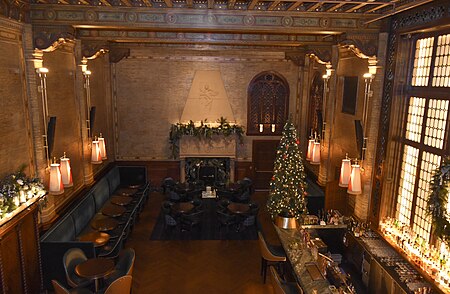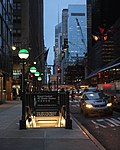Campbell Apartment

The Campbell is a bar and cocktail lounge in Grand Central Terminal in Midtown Manhattan, New York City. The space, long known as the Campbell Apartment, was once the office of American financier John W. Campbell, a member of the New York Central Railroad's board of directors. It was later used as office space, as a studio by CBS and as a jail by Metro-North Railroad. Renovations in 1999 and 2007 restored the space to its original opulence at a total cost of nearly $2 million. Temporarily closed in 2016, the bar was reopened the following year under new management.Located in the southwestern corner of the Grand Central Terminal building—above the northeastern corner of 42nd Street and Vanderbilt Avenue—the space is reached by a staircase from the terminal's balcony level.
Excerpt from the Wikipedia article Campbell Apartment (License: CC BY-SA 3.0, Authors, Images).Campbell Apartment
East 48th Street, New York Manhattan
Geographical coordinates (GPS) Address Nearby Places Show on map
Geographical coordinates (GPS)
| Latitude | Longitude |
|---|---|
| N 40.752572222222 ° | E -73.977813888889 ° |
Address
Grand Central Terminal
East 48th Street
10017 New York, Manhattan
New York, United States
Open on Google Maps








